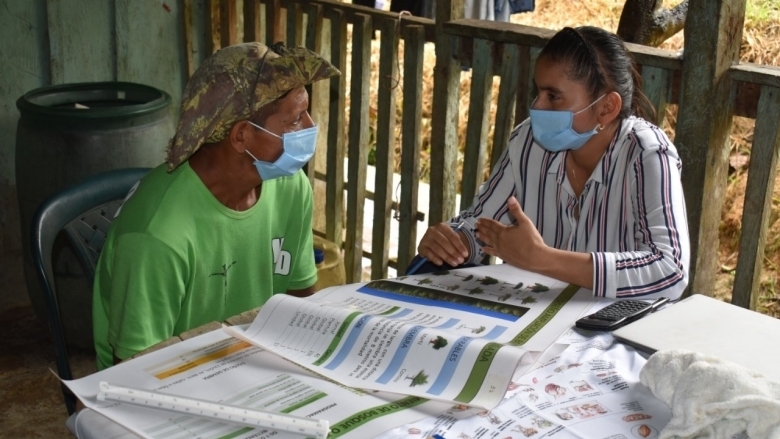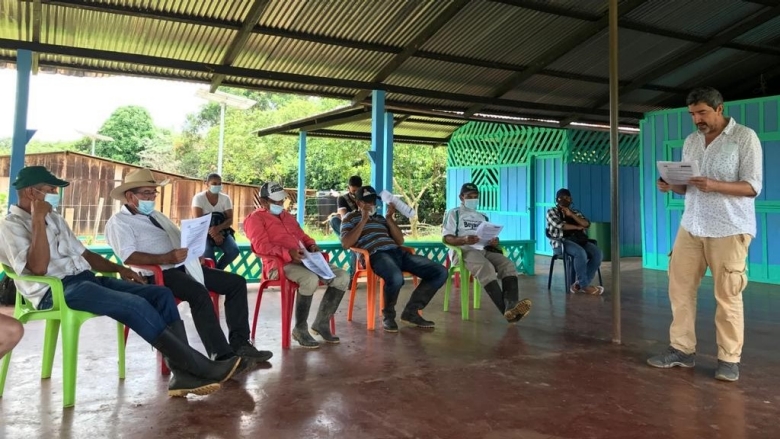“People think that the standing trees do not produce benefits, but we need to change that mentality. In the forest we have much more profitability than in cattle, with wood, resins, seeds and tourism. We are going to pursue a forest-based economy without deforestation.,” said Mr. Olmes Alonso Rodríguez, a farmer member of El Capricho Association in the Guaviare department of Colombia. As part of one of the 373 families from Caquetá and Guaviare in the Colombian Amazon that have, in the last five years, agreed to incorporate forest management and conservation practices, Mr. Rodríguez recognizes the benefits that the forest provides to him and his family.
Caquetá and Guaviare represented over 30 percent of the country’s deforestation in the first quarter of 2020, according to the Institute of Hydrology, Meteorology and Environmental Studies (IDEAM). Unplanned road infrastructure, conversion of forests for land grabbing and unsustainable extensive cattle ranching practices are key drivers of deforestation in this region. This threatens the biodiversity and the livelihoods of local communities that depend upon the Amazon ecosystem. To mitigate these drivers of deforestation, solutions are required that are embedded in the social, economic and cultural context of the region and are also effective in engaging communities by providing alternative livelihood options.
“Communities are key because it is their land that is being deforested, it is they who decide what to do. We are interested in people having a change of attitude towards land management and the opportunities that the forest provides "
-Luz Marina Mantilla, General Director, SINCHI Institute
The Heart of the Amazon project, part of the Amazon Sustainable Landscapes (ASL) Program, funded by the Global Environmental Facility (GEF) and implemented between the Ministry of Environment, SINCHI Research Institute, National Natural Parks of Colombia, IDEAM, Corpoamazonia, CDA, Natural Heritage Fund, and with the World Bank support, is working to strengthen institutional and community forest governance, conserve forests and promote sustainable management in the Amazon.
Through the project, farmers have agreed to conserve their land as standing forests, committed to no-deforestation, restore degraded areas, develop agroforestry projects and enable sustainable forest use. This is based on voluntary agreements that provide legal and de facto landowners with a range of benefits conditional on specified conservation actions or outcomes. By directly linking sustainable practices with an externally provided stream of monetary and non-monetary benefits, conservation can be converted into an economically attractive choice.
The elements of a conservation agreement
The process to formalize conservation agreements includes a participatory landscape planning process where communities are presented with information including data from satellite and aerial imagery and other georeferenced sources to identify property delimitation, land uses and establishing potential sustainable land use arrangements. Social cartography is an essential tool to allow farmers visualize those arrangements for the farms, share their knowledge and agree on a farm planning arrangement that is best suited to their vision for their territory and wellbeing.


